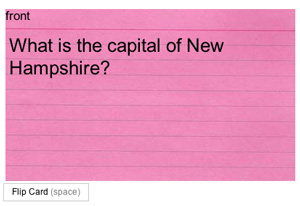Say you have a blog, like this one, or some other RSS feed that you would like to incorporate into your WebCT course. Sounds like a good idea to me. Or maybe you maintain a list of public bookmarks on a site like FURL or del.icio.us both which have RSS subscription possibilities. If you are not sure what RSS is, not to worry. RSS stands for Really Simple Syndication. An RSS feed is made up of code (XML) that a user can subscribe to and is then pushed out to other places you might be more inclined to visit like your google homepage or news aggregator or even a WebCT page.
The site that makes this so easy to do in WebCT is feed2js.org. This site will generate all the code necessary to build a simple RSS aggregator for yourself or your students. All you need to know is the URL for the RSS feed. This is usually a little button somewhere that says RSS or XML or ATOM. If you click on that, your screen typically doesn't look too pretty, but your address bar will contain the URL that you need. Select it and copy it. The feed for this blog is http://abbreviated.blogspot.com/atom.xml.
Then you visit Feed2js.org and click on the Build tab. Paste in the URL, make your selections, preview your feed and finally click the Generate JavaScript button. Select this script and copy it.
Then inside WebCT, create a new HTML file and paste in the script. Save it and take a look at your handiwork. Now, everytime that blog or RSS feed has something new added to it, your page will change automagically. If I update my blog, my feed page is updated as well. A great way to incorporate blogs reading into your WebCT course.
Thanks to Jason Vetter for showing this at the WebCT User Conference!
7.28.2006
7.27.2006
cueFlash

This is a simple little tool that has wide application potential. Create your own deck of Flashcards for any subject and share your deck with others.
I have created a deck for Online Learning jargon and terms (you will need to create a login to actually use the deck). Feel free to share it with your learners by passing them the link. And feel free to add to the deck if there are items missing!
7.21.2006
!mpact 2006
Much to say about the WebCT user conference. Not sure where to start. First, check out Dr. David Weinberger's website, blog, books and more. Intriguing and maybe even inspirational. Next, check out the WebCT website for news on Application Pack 1 that was recently released for CE 6 and Vista users. Lots of expanded features. Then, once that's all soaked in, come back here and maybe I will have posted something more on using RSS feeds in WebCT and my opinion of the designer's role in distance learning courses.
7.03.2006
CJLT
Below is an excerpt from an article in The Canadian Journal of Learning and Technology. The morphing role of the instructor in online courses is certainly interesting.
Having instructors understand their role in the online environment is a theme that also appears in the work of Kanuka (2001) and Mills (2000). According to the participants, instructors seem to have different roles during different stages of the program. For example, instructors teaching students in the beginning of the program may need to play a nurturing role to deal with students’ feelings of anxiety and insecurity. Instructors teaching students in the middle of the program should have a challenging role, pushing students to move further on their learning. Instructors teaching students in the end of the program should have a peer role, working collaboratively with students more as colleagues in the field than as instructors.
Creating appropriate online learning environments for female health professionals
Subscribe to:
Posts (Atom)